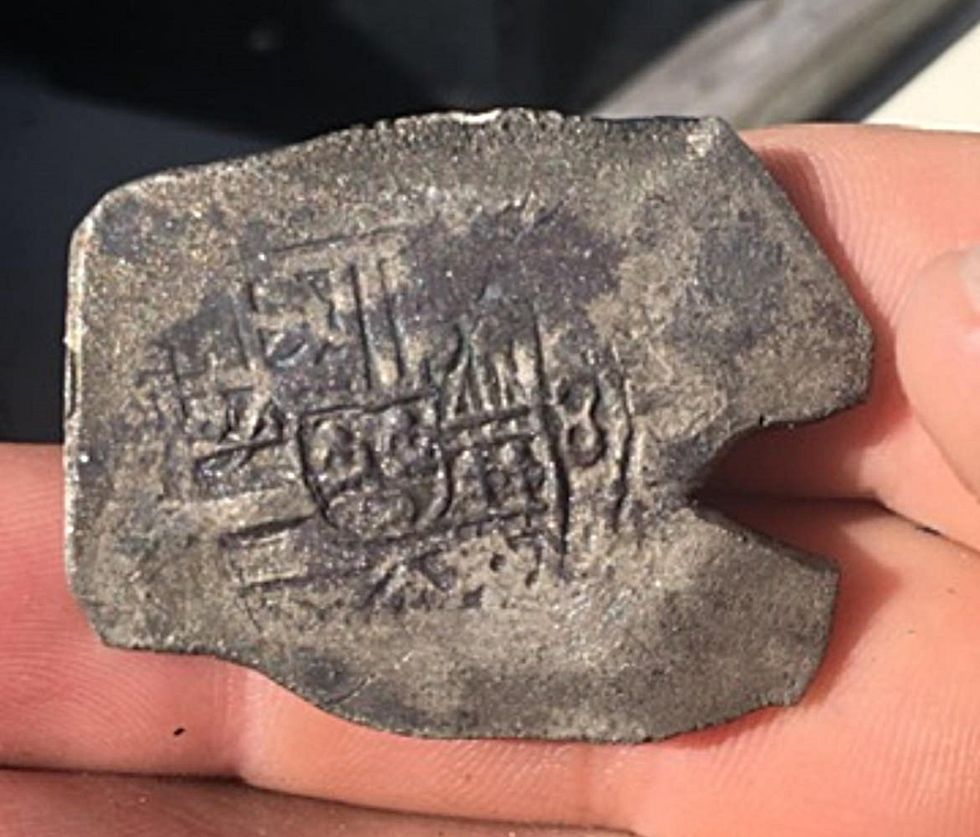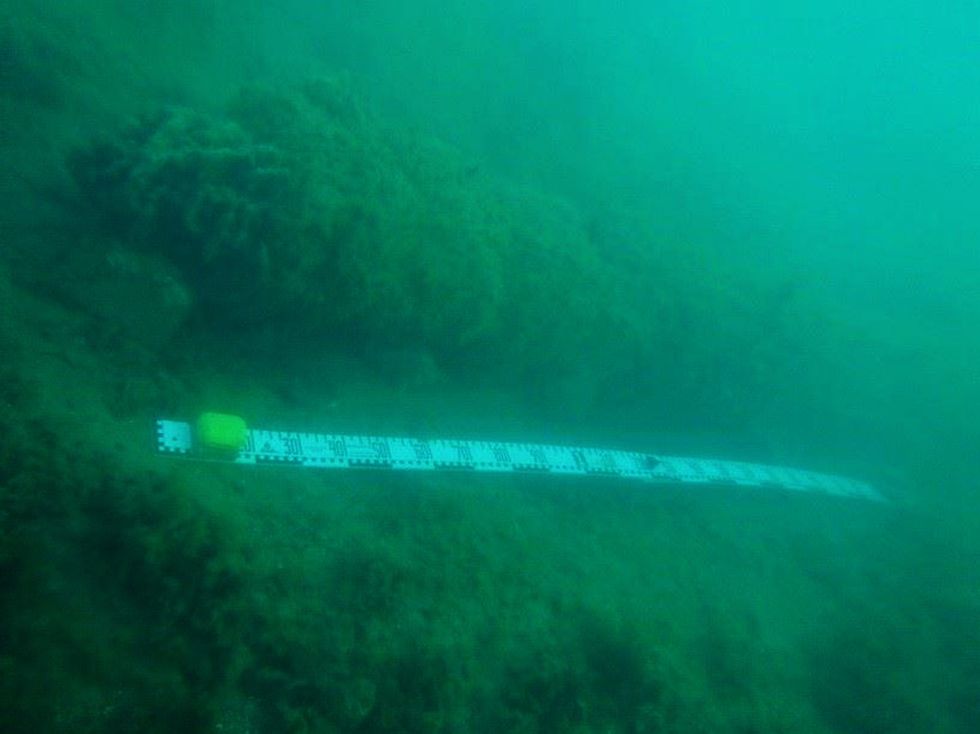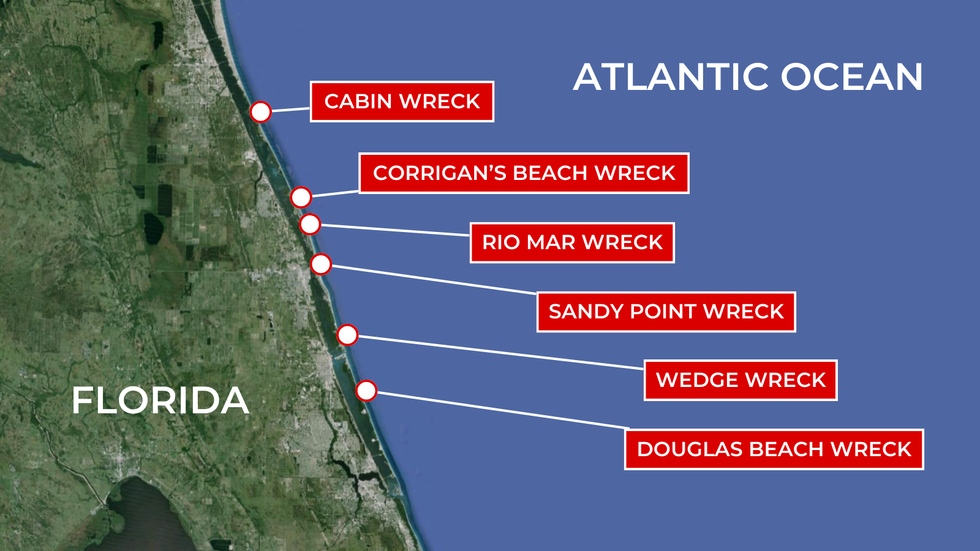Grant Gitschlag made the breakthrough discovery off the Florida coast
Instagram/Google/Penn News
Diver Grant Gitschlag said his team 'instantly' knew what they'd found beneath the waves
Don't Miss
Most Read
Trending on GB News
A diver scavenging a wreck from a hurricane-sunk treasure fleet has achieved a childhood dream by finding stash of Spanish silver worth as much as £100,000.
Grant Gitschlag, a 33-year-old salvage diver from Mississippi, and his crew made the discovery while diving the lost 1715 "treasure fleet" - 11 imperial Spanish ships which sunk off the coast of Florida while carrying silver back to Europe.
All in all, Gitschlag's team aboard the MV Lilly May recovered over 200 silver cobs, or irregularly-shaped coins from the days before they were machine-minted.
The diver said the landmark find formed part of a childhood dream.
He said: "I was always into trying to find stuff from a very young age. What little boy doesn't dream about buried treasure, you know?
"It wasn't until I was in my late teens that I realised people were actually out here doing this, and I wanted in - so I signed on with a captain down here in 2014 and that kick-started this."
Gitschlag continued: "We always expect to find something... nine times out of 10 we do.
"But it will be more mundane stuff like broken pottery, ballast stones, iron and bronze spikes, etc. - coins, even one, are always a nice day.
"We instantly knew what those irregularly-shaped black objects were.
MORE LIKE THIS:

Gitschlag's team "instantly" knew what the objects were
Penn News
"Silver coins can develop a thick crust from corrosion after spending hundreds of years in the water, but there's no mistaking a piece of eight when it comes up.
"They're heavy and often times you can see some detail peeking out."
The coins were found in the debris field of one of the two flagships of the fleet, though Gitschlag said it remains uncertain even now which ship is which.
He believes the coins were minted in Mexico City between 1700 and 1715, and formed part of a treasure whose loss was a heavy blow for Spain.
He said: "They were being carried as part of a large shipment headed back to Spain, which was nearly bankrupt after years of war and desperately needed the treasure."

Gitschlag's team logged photos of their underwater discoveries
Penn News
According to antique coin valuations website CoinQuest, the value of Spanish cobs from this era varies depending on denomination, state of preservation, and whether the date is showing.
It estimates values between $60 (£46) for half a real without a visible date, to $650 (£500) for a well-preserved eight-real piece with the date showing.
That gives the hoard an estimated catalogue value between $12,000 (£9,200) and $130,000 (£100,000).
The diver and his team were subcontracting for 1715 Fleet Queens Jewels LLC, a firm with exclusive salvage rights for the wrecks.
In a statement, the company said most of the coins were higher denomination four and eight-real pieces.
But Gitschlag emphasised that they had not been properly valued yet - and few would be sold anyway.
He said: "We don't know a value, as they have not been cleaned yet. Also, very few will go on the market.
"Some will be disbursed between the Florida museum, our parent company who we subcontract through, and our crew."
And though treasure hunting may seem a glitzy career, Gitschlag said it wasn't always plain sailing.

Numerous wrecks from the Spanish treasure fleet are being scoured to this day
GB News/Google
He added: "It's not nearly as glamorous as some folks might expect. You're dealing with the ocean, so things can be very unpredictable.
"Dirty water, rough swells, and high winds are all very common for us, and that will cut down productivity - but we do it because we all love history!"
Gitschlag had been joined on the expedition by business partner Mike Penninger and crewmates Nick Amelio and Corinne Lea.
When the treasure fleet was lost, "well over 1,000 perished" according to the 1715 Fleet Society, with many more succumbing each day after the storm as stranded survivors died.








